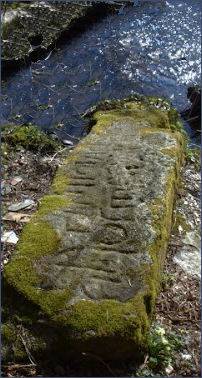The Arthurian Centre
 The Arthurian centre is located at Slaughterbridge near the historic market town of Camelford, the centre is set in 20 acres surrounding 'King Arthur's Stone'.
The Arthurian centre is located at Slaughterbridge near the historic market town of Camelford, the centre is set in 20 acres surrounding 'King Arthur's Stone'.
Visitors can stroll through the fields where King Arthur and his arch foe Mordred met for their fatal last battle.
 The medieval chronicler, Geoffrey of Monmouth, writes in his famous 'History of the Kings of Britain' informing us that the the Battle of Cammlann, known in Welsh as Cad Camlan or Brwydr Camlan, took place at a site beside a river in Cornwall.
The medieval chronicler, Geoffrey of Monmouth, writes in his famous 'History of the Kings of Britain' informing us that the the Battle of Cammlann, known in Welsh as Cad Camlan or Brwydr Camlan, took place at a site beside a river in Cornwall.
The fierce battle is said to have turned the river red with the blood of the slain, whilst Arthur and Mordred fought in hand-to-hand combat across the river bridge. The king is said to have slew Mordred but had already received a fatal wound from Mordred's sword, but Arthur's forces triumphed.
On the stream bed at Slaughterbridge lies sixth century inscribed stone, said to mark the spot were Arthur fell after meeting Morded in battle. The stone, which measures nine feet long, is inscrbed in both Latin and Ogham , a rare mixture of the two written languages. Ogham was a simple form of Celtic runic writing. Both the inscribed stone and battle are dated by the earliest stories to 540 AD.
The 'King Arthur Stone' at Slaughter Bridge was first recorded by Richard Carew in 1602 but is thought to have lain on the river bank for a thousand years before that. Much later, the poet Alfred, Lord Tennyson stood on this spot in 1848 and gained inspiration to write his famous work 'The Idylls of the King'.
Lady Falmouth's Secret Garden is an eighteenth century garden, which was rediscovered during 2005. Further investigation followed by a full restoration is now planned.
The centre brings the legend of King Arthur to life. The 1,000 feet exhibition room houses a collection of display panels, photographs, illustrations, texts and specially commissioned paintings embracing more than 1,500 years of history and legend. Visitors can watch a video presentation on the site and legends. There is also brass rubbing, a children's quiz, a nature trail and gift shop.